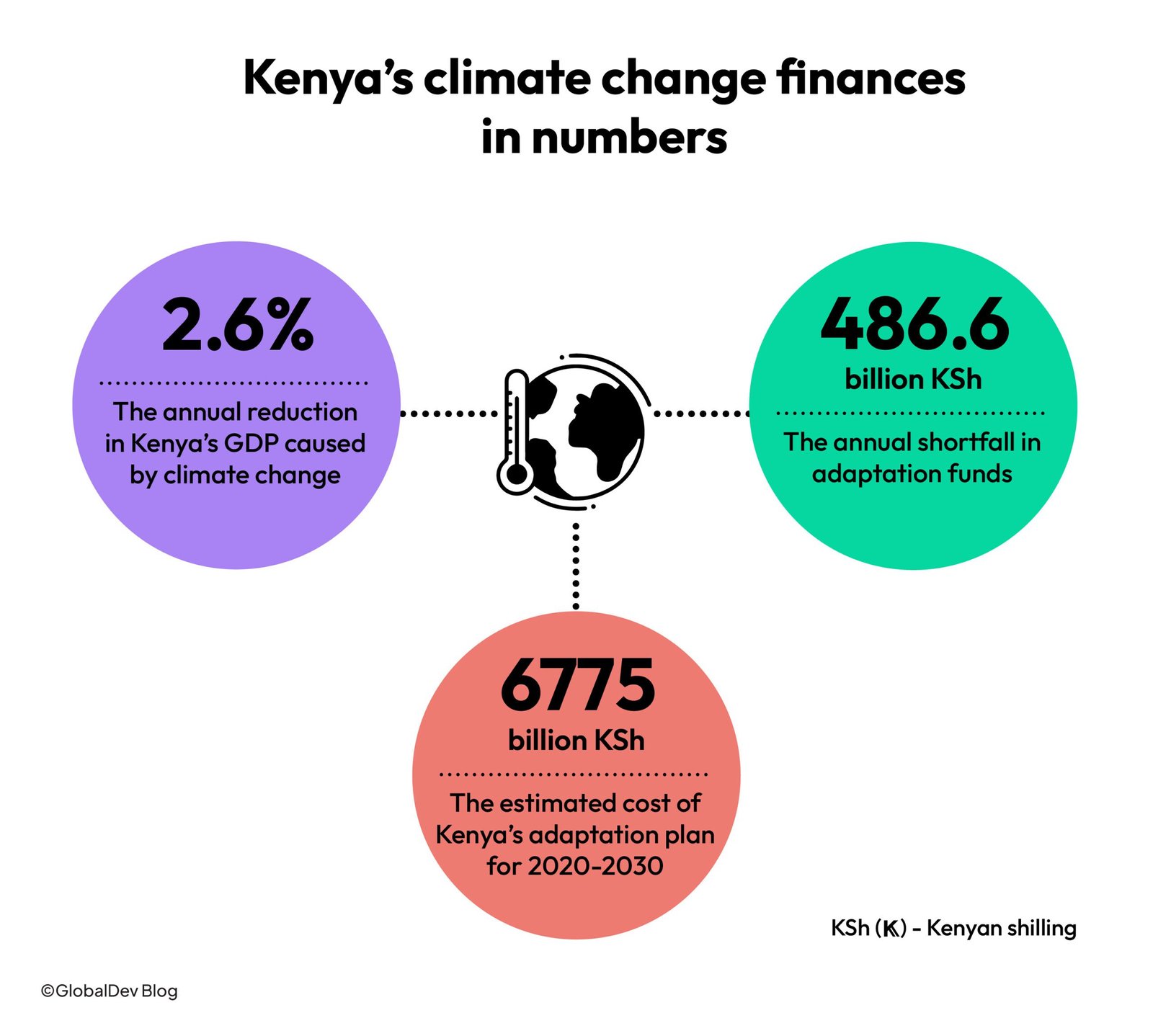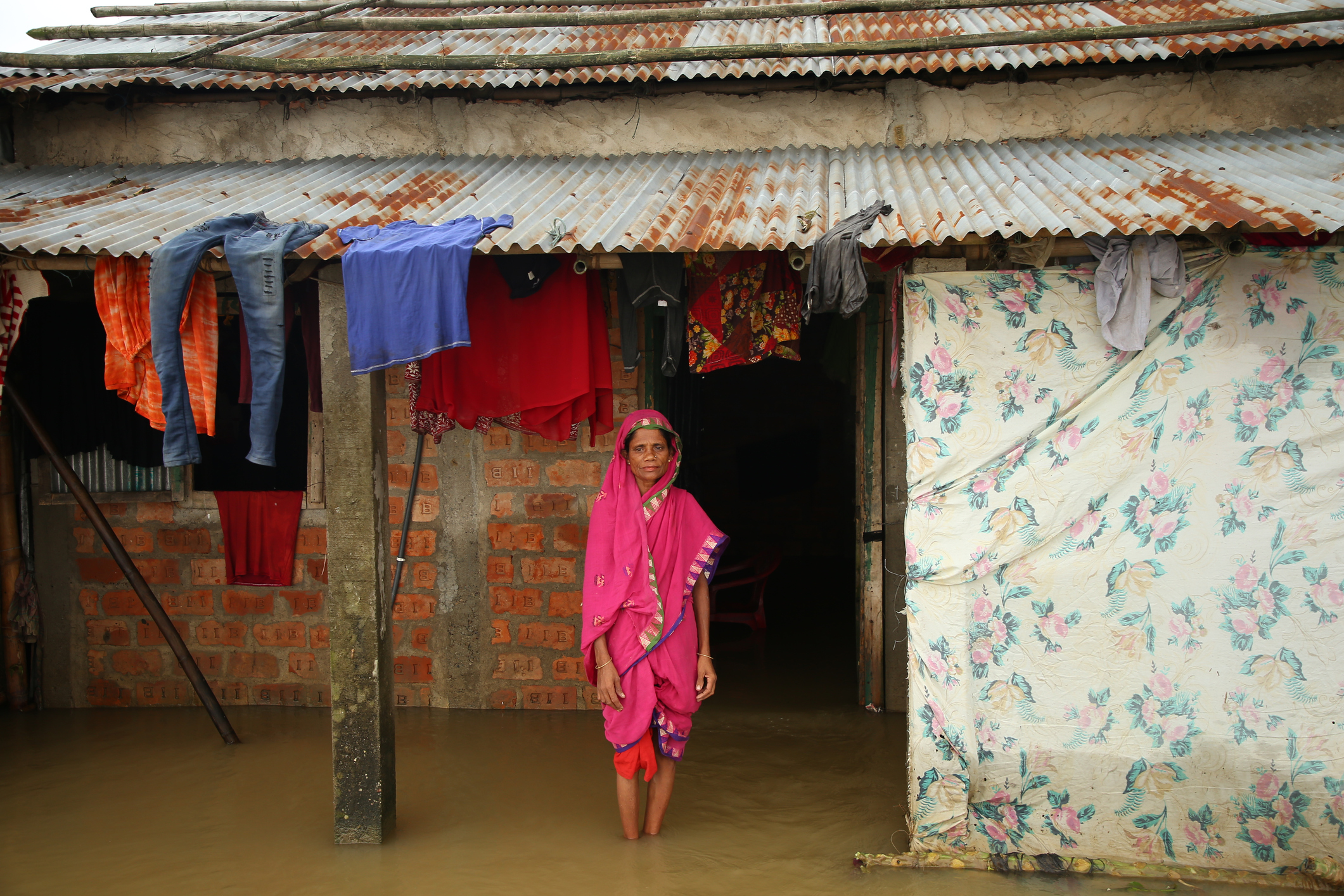Current climate financing in Kenya will only partly address climate issues. Research can help the country better meet its climate goals by identifying critical gaps and misaligned priorities in government spending.
Kenya’s climate change adaptation plan – implemented since 2013 in 5-year plans (2013-2017 and 2018-2022) – mainstreams climate actions in development planning, budgeting and implementation. Supported by a national climate change mitigation policy, this approach gives the impression that Kenya’s climate change interventions are competent. Additionally, the Climate Change Act 2016 outlines the institutional frameworks and roles for managing and overseeing the country’s climate change action plans. However, an incisive look shows that the current approach to spending will not propel Kenya to the environmental goals outlined under Vision 2030, the country’s long-term development blueprint towards prosperity.
Research in a National Treasury-commissioned report explores the current approach and presents three main factors that limit the effective execution of Kenya’s climate change adaptation and mitigation plans. While these are not the only factors, a better understanding of them will point the way to improved government spending that helps the country meet its climate change ambitions.
Too little spending on adaptation
The first challenge in meeting Kenya’s climate goals, restated by other development partners, lies in its high spending on climate mitigation. This approach is contrary to the country’s primary focus on adaptation. Given the tight fiscal space that does not allow for much budget flexibility, and Kenya’s the current high debt levels, spending on areas with the most impact is imperative.
The estimated cost of implementing the country’s adaptation plan stands at Ksh. 6,775 billion (USD 48 billion) for the period 2020-2030. Available data also shows that in 2018, only a third (Ksh. 243.3 billion (USD 1.7 billion)) of the total finance required for climate change adaptation-related investment was realized. This translates to an annual resource gap of Ksh. 486.6 billion (USD 3.5 billion).
The budget estimates for the financial year 2023/24 shows that the country’s expenditure on debt repayment, debt servicing and pensions will increase to 49% from 44% in the previous year. This will only leave 51% (Ksh. 1.93 trillion) of the estimated Ksh. 3.79 trillion for implementation of program budgets at the national and county level.
Counties need more climate finance
The World Bank highlights the second issue as the lack of focus on climate change action at the local level. The executive order for the establishment of a State Department for Environment and Climate Change under the Ministry of Environment shows that commitment to addressing climate change is a national interest. This focus however should also be at the county level, given that counties bring service delivery closer to citizens.
Yet, the counties’ share of total government spending has declined, with the national government retaining a higher share of fiscal resources even in sectors where functions have been devolved. There is an overlap of duties due to incomplete unbundling exercises, pointing to the ineffective implementation of intergovernmental fiscal relations systems.
Thus, a substantial shareof the national shareable funds is still held at the national level. In the quest to address this challenge, the new Financing Locally-Led Climate Action Program, funded by the World Bank, targets support towards communities in rural wards and strengthens county governments’ capacity to manage climate risks. Locally led climate resilience actions are a great strategy, however the Budget Policy Statement 2023 fails to uphold this as most of the proposed strategies are concentrated at the national level.
A disproportionate focus on renewable energy
The third problem highlighted by the research is that Kenya’s climate finance strategy disproportionally targets the renewable energy sector, while other key sectors, like agriculture, forestry and land use, transport, and water management, are underfunded. Agriculture is central to economic growth, employment and poverty reduction, and the adverse effects of climate change on the sector can reverse the gains realized in the past decade.
Furthermore, Kenyan agriculture relies on rainfall, with less than 5% under irrigation, and the sector has suffered from the increasing variability in rainfall. Climate change poses an additional challenge to the prospects of the sector, putting agricultural production and food security at risk through its impacts on water availability and the incidence and intensity of animal and plant pests and diseases. The National Treasury reiterates that current financing disproportionately targets certain sectors that will only partially address climate issues and significant efforts will be needed to align all sectors.
The research shows that there is a relationship between climate change and disasters, such as COVID-19, droughts, wildfires, and locust plagues in Eastern Africa. Therefore, a policy approach that does not encompass all sectors is not equipped to address the evident sectoral challenges and disproportionate budgetary focus.
It is imperative that governments and policymakers adopt a holistic approach to tackling the complex challenges posed by natural disasters and climate change. This requires a comprehensive strategy that takes into account the interconnectivity of different sectors. Furthermore, it is crucial to prioritize funding for the research and development of new technologies that can help adapt to changing climate patterns. This will require a significant shift in budgetary focus towards long-term solutions rather than short-term fixes.
The way forward
So, what needs to be done given these findings? The research shows that the first step is to improve climate finance tracking and reporting. This will help in understanding whether financing is meeting climate needs and the areas where gaps exist. Resulting in informed scaling up of investments or reductions as required.
Kenya has an Integrated Financial Management and Information System that can be used by ministries, state departments, agencies and counties to regularly report on climate-related expenditure. Since coordination among actors is key to effective implementation of the national plan, an integrated system will improve reporting between actors at all levels.
The current fiscal challenges, worsened by the effect of COVID-19 and the Russia-Ukraine war, present a unique challenge in implementing climate change interventions. They also present an opportunity for the involvement of the private sector through initiatives such as Public Private Partnerships. The private sector can play a big role in closing the financing gap.
In 2018, Ksh. 98.9 billion (USD 979 million) was invested by the private sector on climate-related expenditure, with 65.6% coming from foreign private companies funding domestic projects and 34.4% coming from Kenyan businesses using their own funds.
Nearly 41% of all climate finance monitored in Kenya comes from private sources, with the majority of this money going toward the development of renewable energy sources. Subsidies and incentives can be provided to private sector to create an enabling environment for investors across all sectors. Policy certainty and improved public infrastructure is estimated to accelerate private climate financing to 15% from the current 10%. This will provide Ksh. 196.5 billion (USD 1.4 billion) for the ten-year period (2020-2030).
Cost-benefit analysis confirms that despite the high cost, there are great gains in investing in climate financing. For every dollar spent, an economic gain worth four dollars is realized. Although data on Kenya’s estimated gains is not available, reversing the effect of climate change will mitigate the economic loss currently estimated at 2.6% of GDP. Globally, climate change interventions are projected to yield a direct economic gain of US$ 26 trillion by 2030.








